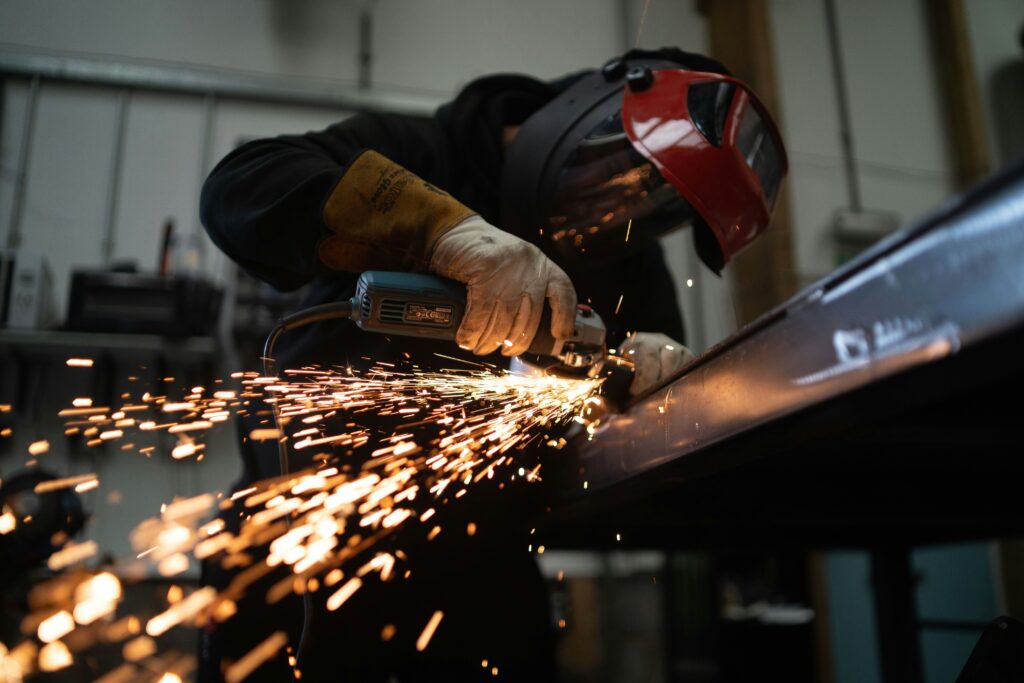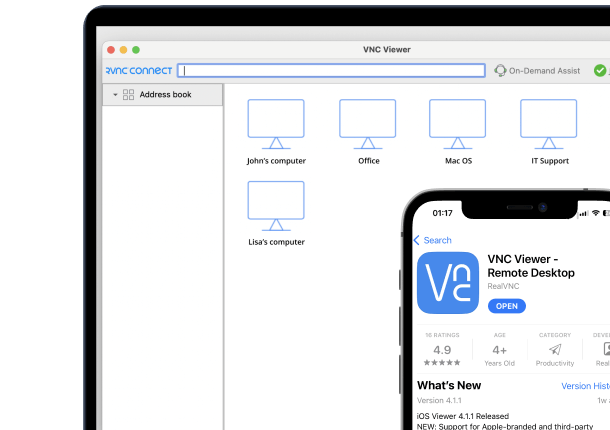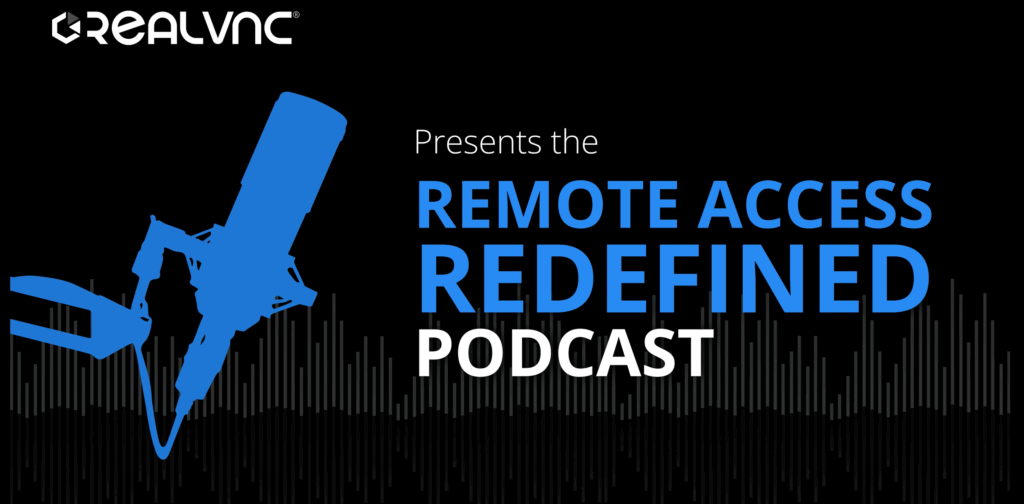 Manufacturing has been a source of innovation for many decades, seeing mass adoption of new technologies as they become available. Global competition continues to ramp up and intensify, while customers expect more from businesses.
Manufacturers are facing increased pressure to optimize their processes for maximum manufacturing efficiency, quality, and sustainability. The difference between industry leaders and lagging competitors has a lot to do with their approach to process optimization. The answer lies in adopting a systematic way of transforming production operations with strategic improvements and innovative tech.
Manufacturing process optimization offers benefits through incremental improvements, but that is only part of the story. It helps leaders get to the bottom of how organizations approach the entire production process, along resource utilization, and quality management.
Advanced technologies help a lot with this process. With technology solutions like data analytics, and secure remote access facilities, manufacturers can achieve tangible gains in productivity while also reducing production costs and improving the overall quality of their products.
Manufacturing has been a source of innovation for many decades, seeing mass adoption of new technologies as they become available. Global competition continues to ramp up and intensify, while customers expect more from businesses.
Manufacturers are facing increased pressure to optimize their processes for maximum manufacturing efficiency, quality, and sustainability. The difference between industry leaders and lagging competitors has a lot to do with their approach to process optimization. The answer lies in adopting a systematic way of transforming production operations with strategic improvements and innovative tech.
Manufacturing process optimization offers benefits through incremental improvements, but that is only part of the story. It helps leaders get to the bottom of how organizations approach the entire production process, along resource utilization, and quality management.
Advanced technologies help a lot with this process. With technology solutions like data analytics, and secure remote access facilities, manufacturers can achieve tangible gains in productivity while also reducing production costs and improving the overall quality of their products.
What is Manufacturing Process Optimization?
Defining the Core Concept Manufacturing process optimization is more than a buzzword. It is the analysis and improvement of:- Production process workflows.
- Resource allocation.
- Operational outputs to help companies achieve targets.
Key Benefits of Process Optimization
Manufacturing process optimization isn’t just fancy jargon reserved for meetings, it actually delivers measurable benefits across multiple dimensions of your organization’s operational performance. Boosting Productivity and Output Improved productivity and output are the most obvious advantages, but there is much more to this story. Optimized processes eliminate expensive bottlenecks and reduce cycle times, as well as increasing the overall effectiveness of your fixed equipment. Manufacturers that use these new technologies generally report productivity gains of 15-30% after radically following optimization plans. Achieving Significant Cost Savings Cost savings come from multiple channels like reduced material waste and lower energy consumption, along with less labor requirements. Lean manufacturing principles help identify and eliminate wasteful operations that add no value. Predictive maintenance reduces unplanned downtime like breakdowns, and can even extend equipment life span thanks to better maintenance scheduling. These are improvements that typically generate cost reductions of 10-25% within the first year of them being rolled out. Enhancing Product Quality and Consistency Quality improvements are another major benefit. Optimized processes generate more consistent outcomes with more accuracy and fewer product defects. Using statistical process control and real-time monitoring gives you early detection of quality issues and prevents expensive product reworking and customer complaints. Improved process reliability can lead to better customer satisfaction and brand reputation. Increasing Operational Agility and Responsiveness One of the positive side effects of these processes is operational agility. As manufacturers implement flexible data derived processes that are implementable via quick roll outs, they adapt more quickly to unpredictable market conditions. Optimized operations allow you to quickly adjust production process schedules and accommodate custom orders, or respond to supply chain issues without affecting your operational efficiency or product quality. Improving Safety and Sustainability Safety is a big issue in manufacturing, and when combined sustainability improvements, you start to get a bigger picture that shows the benefits to operations. Optimized processes usually need less manual intervention which almost automatically reduces workplace injuries. On the environmental front, there are benefits that span across many categories including reduced energy costs, minimized waste generation, and lower emissions. These are all advantages that support regulatory compliance and corporate sustainability goals, making it a win-win solution.Core Strategies for Process Optimization
Successfully implementing production process optimization is not always easy. This is because it is an approach that uses a lot of different principles along with new technologies. Start by evaluating current processes and work your way from there. Laying the Foundation with Lean Manufacturing Learning about Lean manufacturing principles will give you the foundation for this goal by using tools like value stream mapping to identify waste, 5S methodology to organize workspaces, and Kaizen events to drive continuous improvement with inventory protocols. These techniques help manufacturers eliminate the eight wastes of lean which are:- Defects
- Overproduction
- Waiting
- Non-utilized talent
- Transportation
- Inventory management
- Motion
- Extra processing
The Role of Digital Twins and Visualization Tools
Digital twin technology has allowed process optimization to be visualized before money is spent on new equipment or manufacturing changes. By creating virtual replicas of physical manufacturing systems, companies can experiment with new ideas and optimizations without affecting production. These are sophisticated simulations that use real-time data from production equipment to allow engineers to test process changes and predict outcomes. It allows them to identify the most optimal configurations without disrupting actual operations. Key Applications of Manufacturing Digital Twins Manufacturing digital twins are useful in many ways for manufacturing optimizations. They allow for layout planning by simulating material flow and identifying potential bottlenecks before physical changes are even implemented. Production scheduling also benefits from scenario analysis. It evaluates different sequencing strategies under different demand conditions, comparing quiet and busy times. Maintenance planning can be automatically generated thanks to predictive modeling that can anticipate equipment failures purely based on operating conditions and historical data. Enhancing Insights with 3D Visualization 3D visualization tools are used with digital twins with intuitive user interfaces that allow for complex analysis of manufacturing data. Heat maps clearly show production process bottlenecks, and animated process flows help identify inefficient material handling patterns if they are present. These visualization features make data analysis available to more people in your organization, giving your operators and supervisors a chance to contribute their insights that engineers and data scientists might not be aware of. Creating a Feedback Loop for Continuous Optimization Using digital twins with real-time monitoring systems can create a potent feedback loop for continuous optimization. As actual production process data updates the digital twin, machine learning algorithms find patterns and suggest improvements, which continues to create self-optimizing manufacturing processes for better efficiency and reliability.Leveraging Remote Access for Process Optimization
Remote access has always been difficult to navigate in manufacturing. Optimizing manufacturing processes across multiple sites can be challenging when implementing process optimization. This is especially true when real-time monitoring is involved. Remote access solutions need to be secure, without adding more complexity to an already sophisticated operation. Enabling Real-Time Monitoring and Troubleshooting Real-time monitoring and troubleshooting are invaluable when production process issues come up. Remote access allows experts to immediately connect to control systems, analyze production data, and implement corrective actions and fixes. It’s even more important for facilities that operate outside standard hours or in remote locations where travelling to the site would take hours. How RealVNC Connect Facilitates Remote Operations RealVNC Connect supports manufacturing and production optimization by enabling secure remote access to control systems and HMI interfaces—specifically those running an operating system with a graphical user interface (GUI). It integrates seamlessly with existing systems and workflows, allowing teams to access familiar user environments remotely without disruption. Key Use Cases for Remote Access in Manufacturing When your production line is down, you need experts to find out what went wrong ASAP. Remote access means that travel time to site is no longer an issue, as remote access can be fired up immediately when it is needed. It’s not just breakdowns that benefit from remote access. Other tasks like equipment commissioning, process improvement implementation, or fixing complex issues can all be resolved or at least diagnosed remotely in most cases. As manufacturers use new technologies, remote training and change management allow you to create centralized training delivery and real-time coaching Through RealVNC Connect, quality engineers can access production data, observe real-time operations, and guide local personnel through diagnostic procedures when needed.Integrating IoT and Advanced Analytics
The Industrial Internet of Things (IoT) has transformed manufacturing data collection through sensor networks that continuously monitor equipment performance and product quality. These sensors generate data streams that show areas in operations where production optimization opportunities are. This was not previously possible with traditional methods. Leveraging Edge Computing with Smart Sensors Using IoT technologies enables edge computing, with smart sensors performing data collection. This reduces bandwidth requirements and creates faster response opportunities to critical alerts. The result is better manufacturing optimization while ML algorithms on edge devices train on data and detect anomalies. They can also predict failures over time with enough data, and optimize control loops without cloud connectivity. This is useful for remote sites that experience communication issues. Transforming Sensor Data with Analytics Platforms Analytics platforms take sensor data and turn it into information that you can work with. Advanced algorithms identify patterns that spot problems before they become critical. Predictive maintenance models are able to forecast equipment failures in advance, which allows for planned interventions that are scheduled to minimize disruption. Process optimization algorithms always analyze production data to find efficiency improvements. Maximizing IoT Value with Secure Remote Access Secure remote access is essential for maximizing IoT value. RealVNC Connect gives authorized personnel access to analytics dashboards so that they can implement production optimization recommendations from any location. This ensures that insights quickly translate into improvements and lower costs, regardless of expertise location.Overcoming Challenges in Process Optimization
Even though the benefits are becoming more obvious, manufacturers still have hurdles that they need to clear before they can implement process optimization initiatives. Data silos are probably the most common obstacles, with valuable information trapped in disconnected systems that can’t be easily analyzed. Legacy equipment usually doesn’t have digital interfaces to connect to, which further complicates data integration. On top of that, security concerns about connecting critical production systems to networks causes hesitation. Navigating Organizational Resistance to Change Organizational resistance is often more challenging to navigate than technical obstacles. Operators that are used to traditional manufacturing efforts can see production optimization technologies as threats to job security or unnecessarily complicated. Middle management might resist changes that alter established power structures or require new skills. Mitigating Security Concerns with Robust Solutions Secure, permission-based remote access solutions like RealVNC address security concerns through multiple protective layers. End-to-end encryption ensures data confidentiality, while granular access controls grant access only to authorized systems and functions. There are audit trails that document all remote access activities, which is good news for both security monitoring and regulatory compliance. Successful change management means combining communication, training, and incentive alignment.Security and Compliance Considerations
Manufacturing operations generate real time data that needs to be protected throughout the optimization process. Production schedules, quality metrics, and manufacturing optimization thresholds are intellectual property. This means it has to be kept safe. Manufacturers have to follow regulations, the data protection rules in their respective industries, and operational safety across the entire production system. RealVNC Connect’s Approach to Security in Manufacturing RealVNC Connect caters for security requirements with advanced features, like end-to-end encryption, multi-factor authentication, and granular permission controls that limit system access based on user roles. Audit trails and session recording are available, which supports security monitoring and regulatory compliance, while tracking system access and actions are there for investigations or audits. Best Practices for Ongoing Security and Compliance Security assessments must be done often, which include things like access control policies and constant monitoring. Principles of least-privilege are preferred for securing systems, alongside regular training so that users understand your security policies and stick to them.Case Studies and Real-World Examples
A U.S. manufacturer of building products had some big obstacles in their process optimization efforts. Their high-temperature kilns needed constant monitoring to prevent production process disruptions and costly product losses. Engineers couldn’t travel to the factory right away while issues were occurring, making it hard to diagnose without intimate facility layout knowledge. By using RealVNC Connect, they got remote access to production systems when issues were still happening, helping them to resolve issues. The manufacturer built on their remote access capabilities across their entire production system, giving them centralized monitoring of equipment performance indicators. This was then turned into process improvements. This manufacturing optimization approach reduced downtime, eliminated unnecessary travel costs for engineers, and sped up continuous improvement implementation.Future Trends in Manufacturing Process Optimization
Optimizing production normally means relying on new technologies that open untapped possibilities. Artificial intelligence and machine learning are driving autonomous optimization, thanks to algorithms continuously analyzing production data to maintain optimal performance. This greatly improves process optimization in manufacturing. Self-learning systems will identify new optimization opportunities that people hadn’t thought of trying. Deeper Integration of IoT, Digital Twins, and Remote Platforms Integration between IoT devices, digital twins, and remote access platforms is becoming essential because it gives us access to important data from sensors through analytics to control systems. There are already augmented reality interfaces that are accessed through secure remote connections that are safely helping operators through complex and dangerous procedures. The Evolution of Smart Factories and Centralized Management Smart factories are becoming more commonplace, and with every piece of manufacturing equipment participating in optimization networks, we will continue to see systems optimize production processes. Secure remote access will be one of the most important ingredients for managing these ecosystems, as they enable experts to monitor and optimize operations across world wide production networks from centralized command centers.How to Get Started with Process Optimization
A successful optimization journey starts with assessing your current capabilities and existing processes to find performance gaps that will help streamline operations. Manufacturers have to document existing processes, measure baseline performance metrics, and find areas where improving systems according to priorities align with business objectives that will ultimately optimize production processes. Value stream mapping provides an excellent starting point for visualizing the current state of operations and with identifying waste. Building a Practical Technology Roadmap with Pilot Projects To build a successful technology roadmap, you need to balance goals and think in practical terms. Start with smaller pilot projects that show value quickly, while building up your existing skills within the business. Secure remote access solutions like RealVNC Connect help you find the low hanging fruit in your operations with minimal disruption, allowing them to yield a high ROI. Developing Internal Capacity and Fostering a Culture of Improvement To build your internal capacity look at creating external partnerships with technology providers, consultants, or academic institutions to help you accelerate your team’s capability development. The main takeaway is that you need to commit to a culture of continuous improvement where optimization becomes part of your daily operations, and not one off, isolated projects.Wrapping Up
Manufacturing process optimization should be at the front of your mind. Lean principles, analytics, and automated data collection will help you get there. With new technologies, manufacturers can see huge improvements in productivity, quality, and profitability. Digital tools that offer secure remote access solutions like RealVNC Connect, are a large part of modern optimization efforts. Real-time monitoring, remote problem solving , and coordinated improvement initiatives across distributed operations. Manufacturing continues its digital transformation, and these features are essential in the manufacturing industry. Getting to optimized manufacturing requires commitment, investment, and cultural change . Increased competitiveness, improved sustainability, and operational excellence – make it worthwhile. Look at your current processes, explore available technologies, and begin your optimization journey right now.FAQs
- What is manufacturing process optimization? Manufacturing process optimization is the improvement of production workflows, resource usage, and operational outputs that help maximize efficiency, quality, and profitability. It relies on manufacturing optimization techniques for streamlining processes, and it combines engineering principles, data analytics, and continuous improvement to do away with waste while creating more value for your business.
- How does remote access support process optimization? Remote access gives you real-time monitoring, troubleshooting, and expert support across different manufacturing operations. Solutions like RealVNC Connect allow authorized personnel to securely access control systems and analytics platforms from any location, speeding up problem resolution and implementing improvements.
- Is remote access secure for manufacturing environments? Yes, when implemented properly. Enterprise-grade solutions like RealVNC Connect give you end-to-end encryption, multi-factor authentication, granular access controls, and detailed audit trails. This protects your sensitive production data while giving you flexibility to implement effective optimization practices in your business.
- What are the first steps to optimize a manufacturing process? Doing process optimization in manufacturing right on the first try requires skill and determination. Start with a thorough assessment of your current operations using value stream mapping to identify waste and inefficiencies. Create baseline performance metrics, start to prioritize improvement opportunities based on business impact, and implement pilot projects to show value. Secure remote access often provides quick wins with minimal disruption, giving you more buy in from the business to expand your projects. f
- Can process optimization benefit small manufacturers? Absolutely. Small manufacturers can normally benefit the most from optimization because they can execute faster than large corporate entities with multiple approval layers. Cloud-based analytics and affordable remote access solutions make advanced optimization techniques accessible and affordable, no matter how small your company is.






